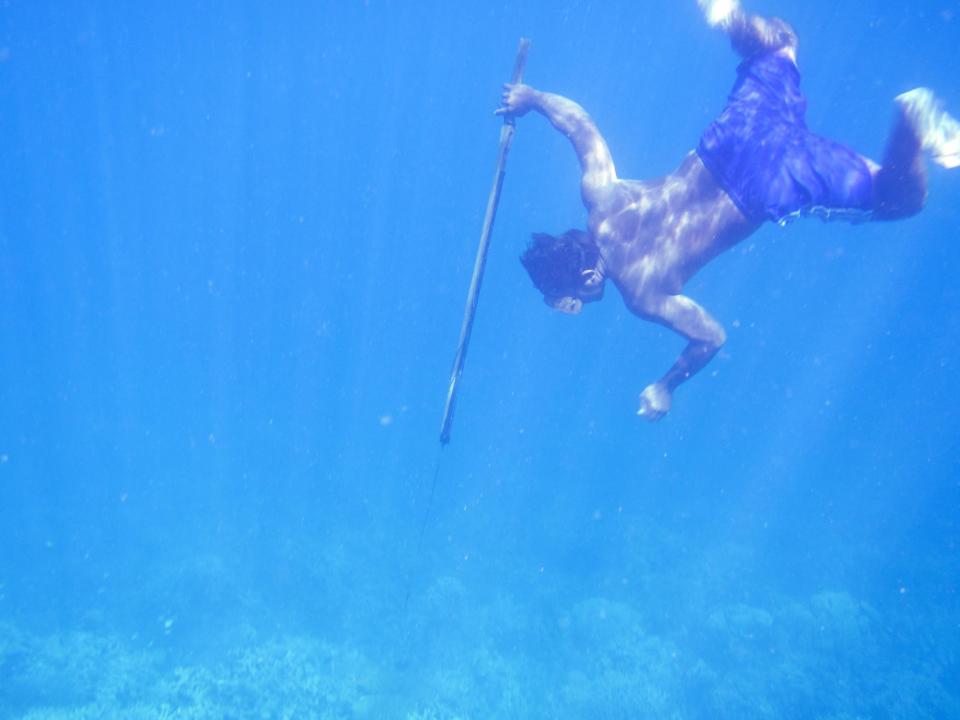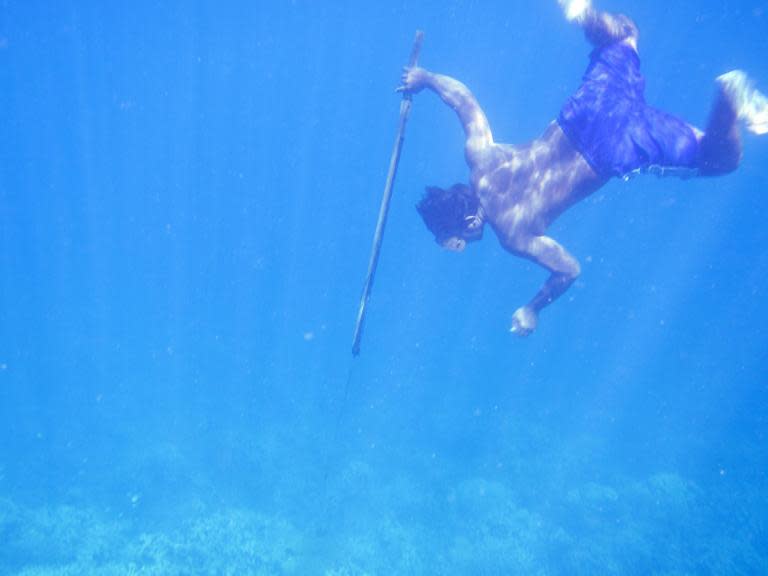'Sea nomads’ in Southeast Asia have evolved ability to dive deeper for longer
For over 1,000 years, the Bajau people – known as “sea nomads” have traversed the seas in houseboats, hunting for food by free diving with spears.
As a result, the Southeast Asian population has evolved a remarkably ability to dive to great depths.
Known for their remarkable breath-holding abilities, Bajau are capable of diving up to 70m with nothing more than a set of weights and traditional wooden goggles.
Seeking to understand how the "sea nomads" achieve such incredible feats, scientists have found evidence for larger spleens in the Bajau – an adaptation that allows them to dive for longer.
It is the first time evolution for diving has been demonstrated in humans.
"There's not a lot of information out there about human spleens in terms of physiology and genetics," said Dr Melissa Ilardo, who undertook the study while she was a doctoral candidate at the University of Copenhagen.
“But we know that deep diving seals, like the Weddell seal, have disproportionately large spleens. I thought that if selection acted on the seals to give them larger spleens, it could potentially do the same in humans."
Dr Ilardo visited a Bajau community living in the village of Jaya Bakti near the Indonesian island of Sulawesi.
Inhabitants of the village set off for lengthy, regular excursions in their houseboats on which they hunt for food. One of the people Dr Ilardo met told her he once stayed underwater for 13 minutes while hunting.
The population was interested in learning about their genetic heritage, and Dr Ilardo used a portable ultrasound machine to measure spleen size in 59 Bajau.
She then measured spleen size in 34 people from a neighbouring village inhabited by non- Bajau people so she could make a comparison.
When she took her data back to Denmark to analyse, Dr Ilardo found Bajau people had spleens around 50 per cent larger than their neighbours.
Spleens are involved in the so-called “human dive response”. When a body is submerged in cold water the heart rate slows, blood vessels in the extremities shrink and the spleen contracts.
This contraction injects a spurt of additional oxygen-rich blood cells into circulation, allowing the body to survive for longer underwater.
Dr Ilardo and her collaborators estimated the enlarged spleens of the Bajau could provide them with around 10 per cent more blood cells than someone with a normal-sized spleen.
As well as measuring spleen size, Dr Ilardo took spit samples from the study participants so she could investigate the genetic basis for the differences she was seeing.
She identified several genes that were observed far more frequently in the genomes of Bajau participants, including one – PDE10A – that is involved with the production of thyroid hormone, which in turn is associated with spleen size.
"We believe that in the Bajau they have an adaptation that increases thyroid hormone levels and therefore increases their spleen size," said Dr Ilardo. "It's been shown in mice that thyroid hormones and spleen size are connected.
“If you genetically alter mice to have an absence of the thyroid hormone T4, their spleen size is drastically reduced, but this effect is actually reversible with an injection of T4."
This is the first adaptation for diving ever observed in humans. Previous work appeared to show that sea nomad children had superior underwater eyesight, but those results have since been disproved.
The findings were published in the journal Cell.
Despite initially warning Dr Ilardo against undertaking the work due to the likelihood she would find no significant results, her supervisors Professor Eske Willerslev and Professor Rasmus Nielsen think her findings are significant for a number of reasons.
"This is the first time that we really have a system like that in humans to study," said Dr Nielsen. “Nature has made experiments for us that tell us how humans react and adapt genetically to a whole new set of physiological conditions, so that we can explore and learn much more about the interaction between genetics and physiology."
Understanding the genetics underpinning the Bajau’s abilities could even have applications in medical research – specifically for those trying to treat the condition of acute hypoxia, when body tissue experiences a rapid depletion of oxygen.
There is also a fundamental need to understand the diversity of genes found in the world’s indigenous populations, said Professor Willerslev.
"This really tells us how valuable and important indigenous populations are around the world that are living extreme lifestyles, in terms of understanding the function of various genetic traits and finding the underlying genetic background for various physiological traits," he said.
"Most of these populations are completely understudied, and I think there is a huge benefit, not only potentially to them, but also to the rest of mankind by actually paying some attention to them."

 Yahoo News
Yahoo News 

